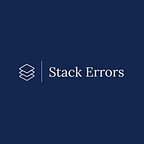Knime — A key lime pie for data scientists.
When it comes to data science, the first thing that comes into mind is a programming language or statistical tools viz.: Python, R, or SAS, which in turn haunts a lot in the dreams of non-coders or budding data science enthusiasts. The reason being these languages are, a bit code intensive and hence many of the users lose interest within a span of time. The sole aim of this article is to introduce a highly user-interactive data analytics, reporting and integration platform that can wipe out the worry of building brainstorming models and machine learning algorithms. All you need to know is a basic idea of statistics and a zeal to learn.
Introducing KNIME, an analytics open-source software that can take care of you all data science-related life cycle right from loading the data to its cleaning, be it removing null values or imputing missing values, visualization, and even building AI and ML models. We would be diving deep into the nitty gritty of this tool in the KNIME Series that would be published in the upcoming weeks, through which Stack Errors would try to explain the usage of the tool with our firsthand experiences.
First things first, let’s get started with the installation of KNIME on the system.
- Click here to download the tool.
- Fill out the required details in the form to set up KNIME on the desktop.
3. Select the operating system: Windows/Linus/Mac
4. Set up the workspace and the working directory. Make sure to select the right path for the directory, as all your projects would be stored there.
6. Specify a memory for the KNIME so that it can use for processing the workflows. Usually, it decided a number on its own in the process which needs to be allocated.
7. Now that all the details are provided, click on next and install the KNIME.
8. Once installed, click on the Launch Button and you are all set to build your first project on KNIME
Knime Community
There is an amazing forum available across the globe consisting of developers, users, educators, and researchers, where one can get access to resources and documentation. Reach out to the KNIME Community for gaining more information.
In the next article, we would be introducing the details of the different sections of KNIME especially node Repository and the Knime Explorer, which are much needed to get going with the tool.
StackErrors is managed by Ankita91 and Sreedev. Follow Stack Errors in Kaggle to explore our data science projects.
Let’s learn together. 💙
